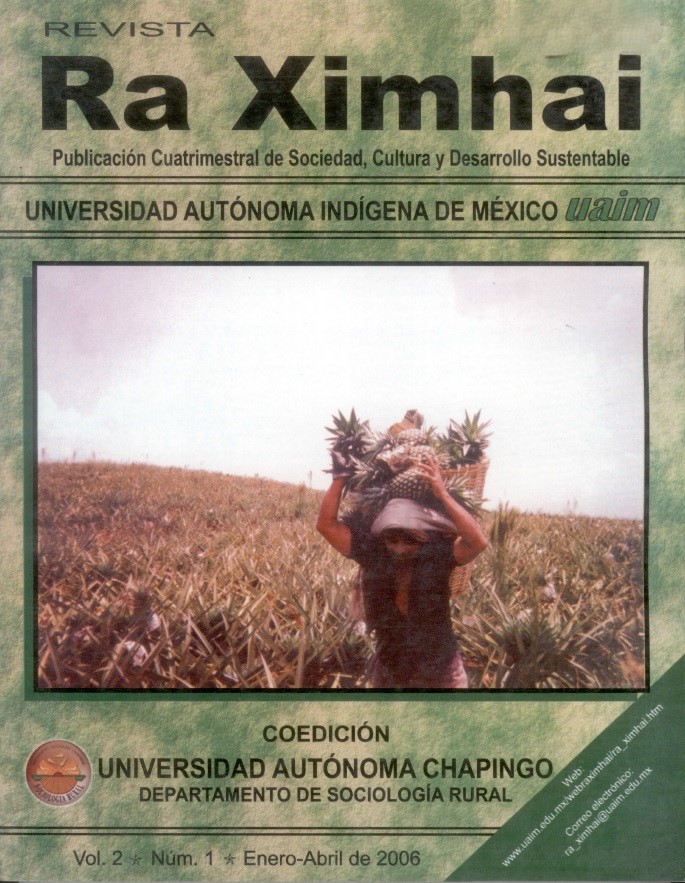Political and economic instruments related to climate change and environmental pollution
DOI:
https://doi.org/10.35197/rx.02.01.2006.09.grKeywords:
greenhouse effect, carbon fixation, Kyoto protocol , forest plantations, natural regenerationAbstract
By capturing international resources through economic instruments, such as clean development mechanisms, forest plantations can be established for carbon capture. This could bring countless benefits to many areas of the country that are currently lagging behind; both environmental (reduction of pressure on natural forests, protection of water sources, improvement of landscape quality, mitigation of global climate change, among others) and social (job creation, economic reactivation of the countryside, etc.).
Downloads
References
Azqueta, O.D. 1994. Valoración económica de la calidad ambiental. Madrid: McGraw Hill. pp. 299.
Bashkin, M.A. ; Binkley, D. 1998. Changes in soil carbon following afforestation in Hawaii. Ecology, 79 (3):828-833.
Boscolo, M.; buongiorno, J. y Panayotou, T. 1997. Simulating options for carbon sequestration through improved management of a lowland tropical. pp.72.
Brender E., V. 1973. Silviculture of loblolly pine in the Piedmont, Georgia. Georgia Southeastern Forest Experiment Station. Rep. No. 33. pp.72.
Brickell J., E. 1968. A method for constructing site index curves from measurements of trees age and height. Its application to England douglas-fir. US Forest Service. Research paper INT-47 U.S.A. pp.25.
Brown, S.; Lugo, A.; Chapman, J. 1986. Biomass of tropical tree plantations and its implications for the global carbon budget. Canadian Jour. of For. Research, 16:390- 394.
CMCC. 2000. Mecanismos previstos en los artículos 6, 12 y 17 del Protocolo de Kyoto: (FCCC/SB/2000/3). (En línea). Disponible en www.unfccc.org.
Delcourt, H. ; Harris, W. 1980. Carbon budget of the S.E. U.S. biota: analysis of historical change in trend from source to sink. Science, 210 (4467):321-323.
Field, B.C. 1995. Economía ambiental: una introducción. McGraw Hill. Department of Resources Economics. University of Massachusetts at Amherst.pp. 587.
Goudriaan, J. 1992. A dónde va el gas carbónico? Mundo Científico, 126(12): 687-692.
Hoen, H. ; SOLBERG, B. 1994. Potencial and economic efficiency of carbon sequestration in forest biomass through silvicultural management. Forest Science, 40(3):429-451.
IISD. 1999. Flexibility mechanisms. (En línea) Disponible en www.iisd.ca/linkages/climate/ba/ mechanisms.html.
Jacobs, M. 1991. Economía verde. Santa Fe de Bogotá: Ediciones Uniandes. pp. 495.
Minambiente. 2000. Cambio climático-Protocolo de Kyoto. (En línea). Disponible en www.minambiente.gov.co/oae/clima.htm.
Orrego, S.A.; jaramillo, L.F.; Loaiza, L.M. 1998. Venta de servicios ambientales: posibilidades y limitaciones para el departamento del Chocó. Medellín. Pp. 26.
Ortiz, R. 1997. Costa Rican secondary forest: an economic option for joint implementation initiatives to reduce atmospheric CO2. Costa Rica. pp.19.
Pearce, D. 1985. Economía ambiental. México: Fondo de cultura económica. Pp.187.
Pearce, D.W.; Turner, R.K. 1995. Economía de los recursos naturales y del medio ambiente. Madrid: Editorial Celeste. Colegio de Economistas de Madrid. pp. 272.
Prebble, C. 1998. Cambios climáticos: el factor bosque. Actualidad Forestal Tropical.
(1):2-5.
Radhakrishna P. P.N. ; George M.K. 1973. Recent experiments on the control of abnormal leaf fall disease of rubber in India. Quat. Journ. R.R.I. Ceylon, 50:223- 227.
Ramírez, O.; Gómez, M.; Shultz, S. 1997. Valuing the contribution of plantation forestry to the national accounts of Costa Rica from the ecological economics perspective. Beijer Research Seminar. Costa Rica.pp. 28.
Richards, K.R. ; Stokes, C. 1995. National, regional and global carbon sequestration cost studies: a review and critique. USA: Pacific Northwest Laboratories. Pp.103.
Romero, C. 1994. Economía de los recursos ambientales y naturales. Madrid: A. Editorial. pp.189.
Schroeder, P.E.; Dixon, R.K.; Winjum, J.K. 1993. Assessing Brazil’s carbon budget: I. Biotic carbon pools. Forest ecology and management, 75:77-86.
Schwarze, R. 2000. Activities implemented jointly: another look at the facts. Ecological Economics, 32:255-267.
Sedjo, R. 1990. The global carbon cycle: are forest the missing sink?. Jour. of For.
(10):33-34.
Surrey D. B. 1998. Impacts of Rising Atmospheric Carbon Dioxide on Model Terrestrial Ecosystems Science, 280 (5362):441-443.
Tans, P., Fung, Y.; Takahashi, T. 1990. Observational constraints on the global atmospheric CO2 budget. Science, 247:1431-1447.
Downloads
Published
How to Cite
Issue
Section
License
Copyright (c) 2006 Gustavo Enrique Rojo Martínez, Jesús Jasso Mata, Alejandro Velázquez Martínez

This work is licensed under a Creative Commons Attribution-NonCommercial 4.0 International License.
Usted es libre de:
- Compartir — copiar y redistribuir el material en cualquier medio o formato
- Adaptar — remezclar, transformar y construir a partir del material
- La licenciante no puede revocar estas libertades en tanto usted siga los términos de la licencia
Bajo los siguientes términos:
- Atribución — Usted debe dar crédito de manera adecuada , brindar un enlace a la licencia, e indicar si se han realizado cambios . Puede hacerlo en cualquier forma razonable, pero no de forma tal que sugiera que usted o su uso tienen el apoyo de la licenciante.
- NoComercial — Usted no puede hacer uso del material con propósitos comerciales .
- No hay restricciones adicionales — No puede aplicar términos legales ni medidas tecnológicas que restrinjan legalmente a otras a hacer cualquier uso permitido por la licencia.








